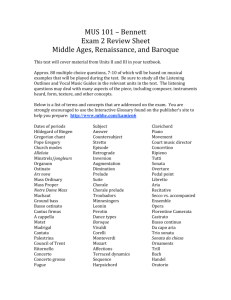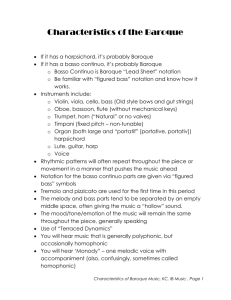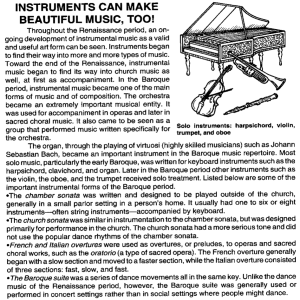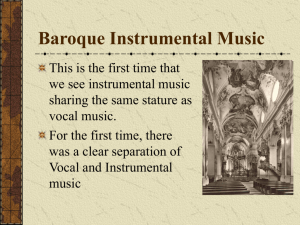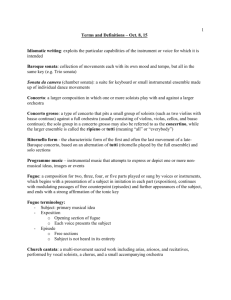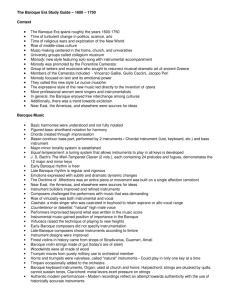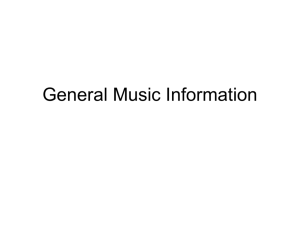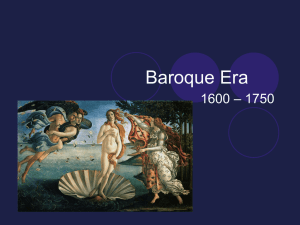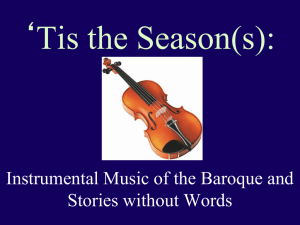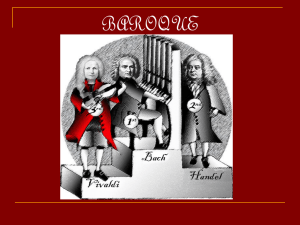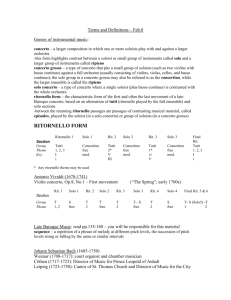Chapter Five: Baroque Art and Music
advertisement
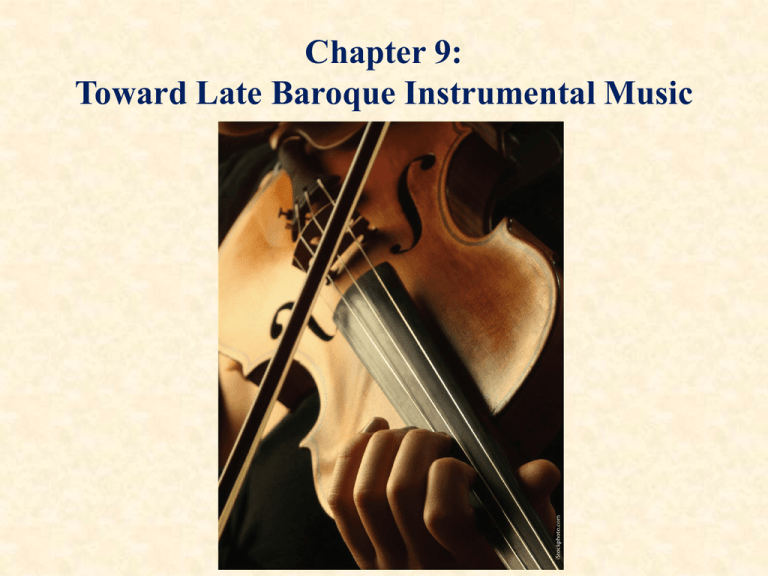
Chapter 9: Toward Late Baroque Instrumental Music Towards Late Baroque Instrumental Music • About 80% of classical music is instrumental • Instrumental music became prominent in the 17thcentury with the rising popularity of the violin • Use of expressive gestures that had developed in vocal music • Doctrine of the Affections also applied to instrumental music – Instrumental music could tell a tale or paint a scene The Baroque Orchestra • Orchestra: An ensemble of music, organized around a core of strings, with added woodwinds and brasses, playing under a leader • Origins in 17th-century Italy and France – Harpsichord for basso continuo • Most Baroque orchestras were small, usually with no more than 20 performers, each with individual parts – Could swell to as many as 80 for special occasions at artistocratic and royal courts • King Louis XIV at Versailles, with composer JeanBaptiste Lully (1632-1687) as conductor • New musical genre: French Overture – Slow introduction, fast second section Pachelbel and His Canon • Johann Pachelbel (1653-1706): Known in his day as a prolific composer for harpsichord and organ • Canon in D: – Use of imitative canon with three voices plus basso continuo that unfolds over time – First movement of a two-movement suite – Use of basso ostinato repeated 28 times – Bass line used by later classical composers as well as pop musicians Corelli and the Trio Sonata • Originated in Italy • Baroque Sonata: A collection of instrumental movements, each with its own mood and tempo, but all in the same key – Chamber Sonata (sonata da camera): featured dance movements, such as “allemande,” “sarabande,” “gavotte,” or “gigue;” four movements: slow-fast-slow-fast • Solo Sonata: Written either for solo keyboard instrument or solo melody instrument (such as violin) • Trio Sonata: Soloist and two basso continuo performers – Sometimes a fourth instrument, harpsichord, is added to bass Arcangelo Corelli (1653-1713) • Composer-virtuoso who made Baroque solo and trio sonatas internationally popular • Worked in Rome as a teacher, composer, and violin performer • Works admired by Johann Sebastian Bach in Leipzig, François Couperin in Paris, and Henry Purcell in London • Modern sounding harmony – Functional harmony: each chord has a specific role or function – Use of ascending chromatic bass lines: increases the sense of direction and cohesiveness Trio Sonata in C Major, Opus 4, No. 1 (1694) • Chamber sonata for two violins and basso continuo (harpsichord and cello) • Four movements: Preludio, Corrente, Adagio, Allemanda • Use of a walking bass: moves stepwise either up or down Vivaldi and the Baroque Concerto • Concerto: An instrumental genre in which one or more soloists play with and against a larger orchestra – Solo concerto: one soloist – Concerto grosso: small group of soloists (concertino) – Tutti: full orchestra • Three movements: fast-slow-fast • Ritornello form: Main theme (ritornello) returns again and again; alternates with solo, virtuosic sections • Popularity peaked about 1730 • Solo concerto continued to be cultivated during the Classical and Romantic period – Became a showcase for a single soloist Antonio Vivaldi (1678-1741) • Most influential and prolific composer of Baroque concerto • Virtuoso violinist and composer – Wrote over 450 concertos • Ordained as a priest – Nicknamed “The Red Priest” due to his red hair • Taught at the Ospedale della Pietà (an orphanage and convent for young women) in Venice from 1703-1740 – Sunday performances for the wealthy and the artistocratic Violin Concerto in E Major, Op. 8, No. 1, “Spring” • The Four Seasons: set of four concertos that depict the feelings, sounds, and sights of the seasons – Vivaldi wrote an “illustrative sonnet” for each • “Spring” Concerto, first movement (early 1700’s) – Ritornello form – Highly descriptive writing – Terraced dynamics – Use of melodic sequence
